Millisecond Pulsar With Magnetic Field Structure
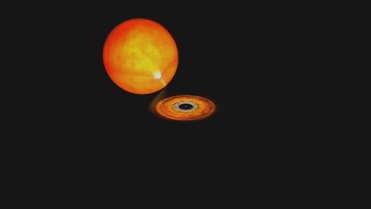

Millisecond Pulsar with Magnetic Field Structure
A pulsar is a rapidly rotating neutron star that emits pulses of radiation (such as X-rays and radio waves) at regular intervals. A millisecond pulsar is one with a rotational period between 1 and 10 milliseconds, or from 60,000 to 6,000 revolutions per minute. Pulsars form in supernova explosions, but even newborn pulsars don’t spin at millisecond speeds, and they gradually slow down with age. If, however, a pulsar is a member of a binary system with a normal star, gas transferred from the companion can spin up an old, slow pulsar to the millisecond range.
Credit: NASA, Dana Berry: Lead Animator Michael McClare (HTSI)
More Posts from Ocrim1967 and Others










Yes, The Apollo Moon Landings Really Did Happen
“2.) We have extensive photographic and video evidence from the Apollo missions themselves. How could the lunar module have ascended back off of the surface and returned the astronauts back to the orbiting module which would take them back to Earth? Exactly like the video above shows, from direct Apollo 17 footage. The hypergolic propellant system isn’t based off of a single explosion, but rather a constant thrust of ~16,000 Newtons that was steadily delivered over a timespan of about 5 minutes. There’s no exhaust trail because there’s no lunar atmosphere, but you can track the spacecraft’s accelerated motion for yourself with even basic modern software.”
We’re less than a month away from the official 50th anniversary of the first crewed Moon landing, and there are all sorts of good reasons to celebrate. But for most of us alive today, the final Apollo mission occurred before we were born. Perhaps because of this distance between then and now, there are a great many people who don’t believe that the lunar landings ever occurred. While you might (rightfully) dismiss this position as an uninformed conspiracy, you can also immediately point to a slew of scientific evidence to demonstrate that yes, we did go to the Moon, and here is an enormous suite of data to back that up. From thousands of photographs to suites of instruments and scientific data to an examination of the landing sites today, everything lines up.
Come get the evidence for yourself, and don’t let someone’s conspiracy-minded ravings lead you astray.
Stellar Winds
Stellar winds are fast moving flows of material (protons, electrons and atoms of heavier metals) that are ejected from stars. These winds are characterised by a continuous outflow of material moving at speeds anywhere between 20 and 2,000 km/s.

In the case of the Sun, the wind ‘blows’ at a speed of 200 to 300 km/s from quiet regions, and 700 km/s from coronal holes and active regions.

The causes, ejection rates and speeds of stellar winds vary with the mass of the star. In relatively cool, low-mass stars such as the Sun, the wind is caused by the extremely high temperature (millions of degrees Kelvin) of the corona.

his high temperature is thought to be the result of interactions between magnetic fields at the star’s surface, and gives the coronal gas sufficient energy to escape the gravitational attraction of the star as a wind. Stars of this type eject only a tiny fraction of their mass per year as a stellar wind (for example, only 1 part in 1014 of the Sun’s mass is ejected in this way each year), but this still represents losses of millions of tonnes of material each second. Even over their entire lifetime, stars like our Sun lose only a tiny fraction of 1% of their mass through stellar winds.

In contrast, hot, massive stars can produce stellar winds a billion times stronger than those of low-mass stars. Over their short lifetimes, they can eject many solar masses (perhaps up to 50% of their initial mass) of material in the form of 2,000 km/sec winds.

These stellar winds are driven directly by the radiation pressure from photons escaping the star. In some cases, high-mass stars can eject virtually all of their outer envelopes in winds. The result is a Wolf-Rayet star.

Stellar winds play an important part in the chemical evolution of the Universe, as they carry dust and metals back into the interstellar medium where they will be incorporated into the next generation of stars.
source (read more) + Wolf–Rayet star
Black holes
A black hole is a region of spacetime exhibiting such strong gravitational effects that nothing—not even particles and electromagnetic radiation such as light—can escape from inside it. The theory of general relativity predicts that a sufficiently compact mass can deform spacetime to form a black hole. The boundary of the region from which no escape is possible is called the event horizon. Although the event horizon has an enormous effect on the fate and circumstances of an object crossing it, no locally detectable features appear to be observed. In many ways a black hole acts like an ideal black body, as it reflects no light.

The idea of a body so massive that even light could not escape was briefly proposed by astronomical pioneer and English clergyman John Michell in a letter published in November 1784. Michell’s simplistic calculations assumed that such a body might have the same density as the Sun, and concluded that such a body would form when a star’s diameter exceeds the Sun’s by a factor of 500, and the surface escape velocity exceeds the usual speed of light.

At the center of a black hole, as described by general relativity, lies a gravitational singularity, a region where the spacetime curvature becomes infinite. For a non-rotating black hole, this region takes the shape of a single point and for a rotating black hole, it is smeared out to form a ring singularity that lies in the plane of rotation. In both cases, the singular region has zero volume. It can also be shown that the singular region contains all the mass of the black hole solution. The singular region can thus be thought of as having infinite density.

How Do Black Holes Form?
Scientists think the smallest black holes formed when the universe began.
Stellar black holes are made when the center of a very big star falls in upon itself, or collapses. When this happens, it causes a supernova. A supernova is an exploding star that blasts part of the star into space.

Scientists think supermassive black holes were made at the same time as the galaxy they are in.
Supermassive black holes, which can have a mass equivalent to billions of suns, likely exist in the centers of most galaxies, including our own galaxy, the Milky Way. We don’t know exactly how supermassive black holes form, but it’s likely that they’re a byproduct of galaxy formation. Because of their location in the centers of galaxies, close to many tightly packed stars and gas clouds, supermassive black holes continue to grow on a steady diet of matter.

If Black Holes Are “Black,” How Do Scientists Know They Are There?
A black hole can not be seen because strong gravity pulls all of the light into the middle of the black hole. But scientists can see how the strong gravity affects the stars and gas around the black hole.
Scientists can study stars to find out if they are flying around, or orbiting, a black hole.

When a black hole and a star are close together, high-energy light is made. This kind of light can not be seen with human eyes. Scientists use satellites and telescopes in space to see the high-energy light.

On 11 February 2016, the LIGO collaboration announced the first observation of gravitational waves; because these waves were generated from a black hole merger it was the first ever direct detection of a binary black hole merger. On 15 June 2016, a second detection of a gravitational wave event from colliding black holes was announced.

Simulation of gravitational lensing by a black hole, which distorts the image of a galaxy in the background
Animated simulation of gravitational lensing caused by a black hole going past a background galaxy. A secondary image of the galaxy can be seen within the black hole Einstein ring on the opposite direction of that of the galaxy. The secondary image grows (remaining within the Einstein ring) as the primary image approaches the black hole. The surface brightness of the two images remains constant, but their angular size varies, hence producing an amplification of the galaxy luminosity as seen from a distant observer. The maximum amplification occurs when the background galaxy (or in the present case a bright part of it) is exactly behind the black hole.
Could a Black Hole Destroy Earth?
Black holes do not go around in space eating stars, moons and planets. Earth will not fall into a black hole because no black hole is close enough to the solar system for Earth to do that.

Even if a black hole the same mass as the sun were to take the place of the sun, Earth still would not fall in. The black hole would have the same gravity as the sun. Earth and the other planets would orbit the black hole as they orbit the sun now.
The sun will never turn into a black hole. The sun is not a big enough star to make a black hole.
More posts about black holes
Source 1, 2 & 3










What Makes Something A Planet, According To An Astrophysicist?
“A dolphin may look like a fish, but it’s really a mammal. Similarly, the composition of an object is not the only factor in classifying it: its evolutionary history is inextricably related to its properties. Scientists will likely continue to argue over how to best classify all of these worlds, but it’s not just astronomers and planetary scientists who have a stake in this. In the quest to make organizational sense of the Universe, we have to confront it with the full suite of our knowledge.
Although many will disagree, moons, asteroids, Kuiper belt and Oort cloud objects are fascinating objects just as worthy of study as modern-day planets are. They may even be better candidates for life than many of the true planets are. But each object’s properties are inextricably related to the entirety of its formation history. When we try to classify the full suite of what we’re finding, we must not be misled by appearances alone.”
You’ve heard about the IAU’s definition, where in order to be a planet, you must pull yourself into hydrostatic equilibrium, orbit the Sun and nothing else, and gravitationally clear your orbit. You’ve also heard about the controversial new definition from geophysical/planetary science arguments, that planets should be based on their ability to pull themselves into a spheroidal shape alone.
Well, what about a third way: defining planets (and a whole classification scheme) based on astrophysical concerns alone? It’s time to start thinking about it!
5 New Competitions for the Artemis Generation!
A common question we get is, “How can I work with NASA?”
The good news is—just in time for the back-to-school season—we have a slew of newly announced opportunities for citizen scientists and researchers in the academic community to take a shot at winning our prize competitions.
As we plan to land humans on the Moon by 2024 with our upcoming Artemis missions, we are urging students and universities to get involved and offer solutions to the challenges facing our path to the Moon and Mars. Here are five NASA competitions and contests waiting for your ideas on everything from innovative ways to drill for water on other planets to naming our next rover:
1. The BIG Idea Challenge: Studying Dark Regions on the Moon
Before astronauts step on the Moon again, we will study its surface to prepare for landing, living and exploring there. Although it is Earth’s closest neighbor, there is still much to learn about the Moon, particularly in the permanently shadowed regions in and near the polar regions.

Through the annual Breakthrough, Innovative and Game-changing (BIG) Idea Challenge, we’re asking undergraduate and graduate student teams to submit proposals for sample lunar payloads that can demonstrate technology systems needed to explore areas of the Moon that never see the light of day. Teams of up to 20 students and their faculty advisors are invited to propose unique solutions in response to one of the following areas:
• Exploration of permanently shadowed regions in lunar polar regions • Technologies to support in-situ resource utilization in these regions • Capabilities to explore and operate in permanently shadowed regions
Interested teams are encouraged to submit a Notice of Intent by September 27 in order to ensure an adequate number of reviewers and to be invited to participate in a Q&A session with the judges prior to the proposal deadline. Proposal and video submission are due by January 16, 2020.
2. RASC-AL 2020: New Concepts for the Moon and Mars
Although boots on the lunar surface by 2024 is step one in expanding our presence beyond low-Earth orbit, we’re also readying our science, technology and human exploration missions for a future on Mars.
The 2020 Revolutionary Aerospace Systems Concepts – Academic Linkage (RASC-AL) Competition is calling on undergraduate and graduate teams to develop new concepts that leverage innovations for both our Artemis program and future human missions to the Red Planet. This year’s competition branches beyond science and engineering with a theme dedicated to economic analysis of commercial opportunities in deep space.

Competition themes range from expanding on how we use current and future assets in cislunar space to designing systems and architectures for exploring the Moon and Mars. We’re seeking proposals that demonstrate originality and creativity in the areas of engineering and analysis and must address one of the five following themes: a south pole multi-purpose rover, the International Space Station as a Mars mission analog, short surface stay Mars mission, commercial cislunar space development and autonomous utilization and maintenance on the Gateway or Mars-class transportation.
The RASC-AL challenge is open to undergraduate and graduate students majoring in science, technology, engineering, or mathematics at an accredited U.S.-based university. Submissions are due by March 5, 2020 and must include a two-minute video and a detailed seven to nine-page proposal that presents novel and robust applications that address one of the themes and support expanding humanity’s ability to thrive beyond Earth.
3. The Space Robotics Challenge for Autonomous Rovers
Autonomous robots will help future astronauts during long-duration missions to other worlds by performing tedious, repetitive and even strenuous tasks. These robotic helpers will let crews focus on the more meticulous areas of exploring. To help achieve this, our Centennial Challenges initiative, along with Space Center Houston of Texas, opened the second phase of the Space Robotics Challenge. This virtual challenge aims to advance autonomous robotic operations for missions on the surface of distant planets or moons.

This new phase invites competitors 18 and older from the public, industry and academia to develop code for a team of virtual robots that will support a simulated in-situ resource utilization mission—meaning gathering and using materials found locally—on the Moon.
The deadline to submit registration forms is December 20.
4. Moon to Mars Ice & Prospecting Challenge to Design Hardware, Practice Drilling for Water on the Moon and Mars
A key ingredient for our human explorers staying anywhere other than Earth is water. One of the most crucial near-term plans for deep space exploration includes finding and using water to support a sustained presence on our nearest neighbor and on Mars.
To access and extract that water, NASA needs new technologies to mine through various layers of lunar and Martian dirt and into ice deposits we believe are buried beneath the surface. A special edition of the RASC-AL competition, the Moon to Mars Ice and Prospecting Challenge, seeks to advance critical capabilities needed on the surface of the Moon and Mars. The competition, now in its fourth iteration, asks eligible undergraduate and graduate student teams to design and build hardware that can identify, map and drill through a variety of subsurface layers, then extract water from an ice block in a simulated off-world test bed.
Interested teams are asked to submit a project plan detailing their proposed concept’s design and operations by November 14. Up to 10 teams will be selected and receive a development stipend. Over the course of six months teams will build and test their systems in preparation for a head-to-head competition at our Langley Research Center in June 2020.
5. Name the Mars 2020 Rover!
Red rover, red rover, send a name for Mars 2020 right over! We’re recruiting help from K-12 students nationwide to find a name for our next Mars rover mission.
The Mars 2020 rover is a 2,300-pound robotic scientist that will search for signs of past microbial life, characterize the planet’s climate and geology, collect samples for future return to Earth, and pave the way for human exploration of the Red Planet.
K-12 students in U.S. public, private and home schools can enter the Mars 2020 Name the Rover essay contest. One grand prize winner will name the rover and be invited to see the spacecraft launch in July 2020 from Cape Canaveral Air Force Station in Florida. To enter the contest, students must submit by November 1 their proposed rover name and a short essay, no more than 150 words, explaining why their proposed name should be chosen.
Just as the Apollo program inspired innovation in the 1960s and ‘70s, our push to the Moon and Mars is inspiring students—the Artemis generation—to solve the challenges for the next era of space exploration.
For more information on all of our open prizes and challenges, visit: https://www.nasa.gov/solve/explore_opportunities
Make sure to follow us on Tumblr for your regular dose of space: http://nasa.tumblr.com










He faced all this for you, for you to be loved, blessed, glorified, exalted, satisfied, accepted, freed and resurrected.
NASA Science Show & Tell
This week, we’re at one of the biggest science conferences in the country, where our scientists are presenting new results from our missions and projects. It’s called the American Geophysical Union’s Fall Meeting.
Here are a few of the things we shared this week…

The Sun
A few months into its seven-year mission, Parker Solar Probe has already flown far closer to the Sun than any spacecraft has ever gone. The data from this visit to the Sun has just started to come back to Earth, and scientists are hard at work on their analysis.

Parker Solar Probe sent us this new view of the Sun’s outer atmosphere, the corona. The image was taken by the mission’s WISPR instrument on Nov. 8, 2018, and shows a coronal streamer seen over the east limb of the Sun. Coronal streamers are structures of solar material within the Sun’s atmosphere, the corona, that usually overlie regions of increased solar activity. The fine structure of the streamer is very clear, with at least two rays visible. Parker Solar Probe was about 16.9 million miles from the Sun’s surface when this image was taken. The bright object near the center of the image is Mercury, and the dark spots are a result of background correction.
Hurricane Maria
Using a satellite view of human lights, our scientists watched the lights go out in Puerto Rico after Hurricane Maria. They could see the slow return of electricity to the island, and track how rural and mountainous regions took longer to regain power.

In the spring, a team of scientists flew a plane over Puerto Rico’s forests, using a laser instrument to measure how trees were damaged and how the overall structure of the forests had changed.

Earth’s Ice
Our scientists who study Antarctica saw some surprising changes to East Antarctica. Until now, most of the continent’s melting has been on the peninsula and West Antarctica, but our scientists have seen glaciers in East Antarctica lose lots of ice in the last few years.


Our ICESat-2 team showed some of their brand new data. From the changing height of Antarctic ice to lagoons off the coast of Mexico, the little satellite has spent its first few months measuring our planet in 3D. The laser pulses even see individual ocean waves, in this graph.

Scientists are using our satellite data to track Adélie penguin populations, by using an unusual proxy – pictures of their poop! Penguins are too small to be seen by satellites, but they can see large amounts of their poop (which is pink!) and use that as a proxy for penguin populations.

Asteroid Bennu
Our OSIRIS-REx mission recently arrived at its destination, asteroid Bennu. On approach, data from the spacecraft’s spectrometers revealed chemical signatures of water trapped in clay minerals. While Bennu itself is too small to have ever hosted liquid water, the finding indicates that liquid water was present at some time on Bennu’s parent body, a much larger asteroid.
We also released a new, detailed shape model of Bennu, which is very similar to our ground-based observations of Bennu’s shape. This is a boon to ground-based radar astronomy since this is our first validation of the accuracy of the method for an asteroid! One change from the original shape model is the size of the large boulder near Bennu’s south pole, nicknamed “Benben.” The boulder is much bigger than we thought and overall, the quantity of boulders on the surface is higher than expected. Now the team will make further observations at closer ranges to more accurately assess where a sample can be taken on Bennu to later be returned to Earth.

Jupiter
The Juno mission celebrated it’s 16th science pass of #Jupiter, marking the halfway point in data collection of the prime mission. Over the second half of the prime mission — science flybys 17 through 32 — the spacecraft will split the difference, flying exactly halfway between each previous orbit. This will provide coverage of the planet every 11.25 degrees of longitude, providing a more detailed picture of what makes the whole of Jupiter tick.

Mars
The Mars 2020 team had a workshop to discuss the newly announced landing site for our next rover on the Red Planet. The landing site…Jezero Crater! The goal of Mars 2020 is to learn whether life ever existed on Mars. It’s too cold and dry for life to exist on the Martian surface today. But after Jezero Crater formed billions of years ago, water filled it to form a deep lake about the same size as Lake Tahoe. Eventually, as Mars’ climate changed, Lake Jezero dried up. And surface water disappeared from the planet.
Interstellar Space
Humanity now has two interstellar ambassadors. On Nov. 5, 2018, our Voyager 2 spacecraft left the heliosphere — the bubble of the Sun’s magnetic influence formed by the solar wind. It’s only the second-ever human-made object to enter interstellar space, following its twin, Voyager 1, that left the heliosphere in 2012.

Scientists are especially excited to keep receiving data from Voyager 2, because — unlike Voyager 1 — its plasma science instrument is still working. That means we’ll learn brand-new information about what fills the space between the stars.
Learn more about NASA Science at science.nasa.gov.
Make sure to follow us on Tumblr for your regular dose of space: http://nasa.tumblr.com
Puppies Make Me Happy




















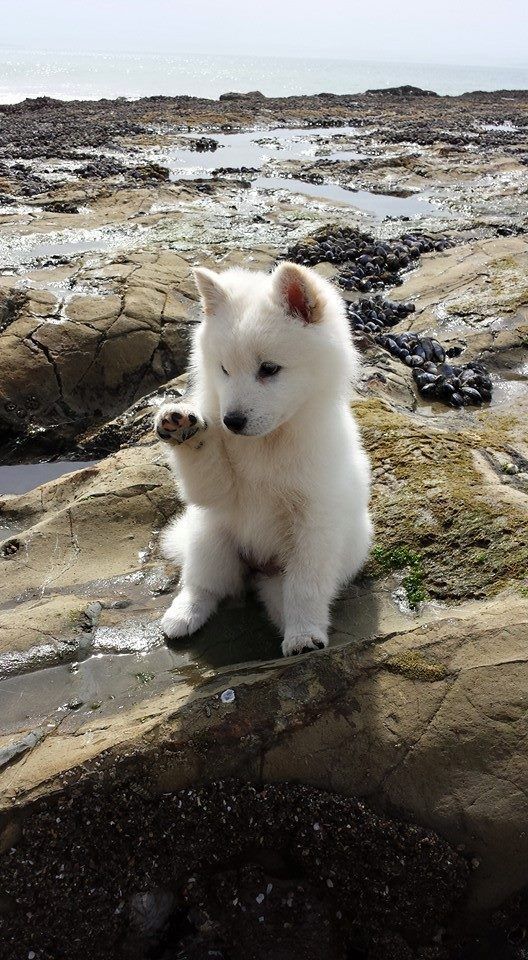
We Like Big Rockets and We Cannot Lie: Saturn V vs. SLS
On this day 50 years ago, human beings embarked on a journey to set foot on another world for the very first time.

At 9:32 a.m. EDT, millions watched as Apollo astronauts Neil Armstrong, Buzz Aldrin and Michael Collins lifted off from Launch Pad 39A at the Kennedy Space Center in Cape Canaveral, Florida, flying high on the most powerful rocket ever built: the mighty Saturn V.

As we prepare to return humans to the lunar surface with our Artemis program, we’re planning to make history again with a similarly unprecedented rocket, the Space Launch System (SLS). The SLS will be our first exploration-class vehicle since the Saturn V took American astronauts to the Moon a decade ago. With its superior lift capability, the SLS will expand our reach into the solar system, allowing astronauts aboard our Orion spacecraft to explore multiple, deep-space destinations including near-Earth asteroids, the Moon and ultimately Mars.

So, how does the Saturn V measure up half a century later? Let’s take a look.
Mission Profiles: From Apollo to Artemis
Saturn V

Every human who has ever stepped foot on the Moon made it there on a Saturn V rocket. The Saturn rockets were the driving force behind our Apollo program that was designed to land humans on the Moon and return them safely back to Earth.

Developed at our Marshall Space Flight Center in the 1960s, the Saturn V rocket (V for the Roman numeral “5”) launched for the first time uncrewed during the Apollo 4 mission on November 9, 1967. One year later, it lifted off for its first crewed mission during Apollo 8. On this mission, astronauts orbited the Moon but did not land. Then, on July 16, 1969, the Apollo 11 mission was the first Saturn V flight to land astronauts on the Moon. In total, this powerful rocket completed 13 successful missions, landing humans on the lunar surface six times before lifting off for the last time in 1973.
Space Launch System (SLS)

Just as the Saturn V was the rocket of the Apollo generation, the Space Launch System will be the driving force behind a new era of spaceflight: the Artemis generation.

During our Artemis missions, SLS will take humanity farther than ever before. It is the vehicle that will return our astronauts to the Moon by 2024, transporting the first woman and the next man to a destination never before explored – the lunar South Pole. Over time, the rocket will evolve into increasingly more powerful configurations to provide the foundation for human exploration beyond Earth’s orbit to deep space destinations, including Mars.
SLS will take flight for the first time during Artemis 1 where it will travel 280,000 miles from Earth – farther into deep space than any spacecraft built for humans has ever ventured.
Size: From Big to BIGGER
Saturn V

The Saturn V was big.
In fact, the Vehicle Assembly Building at Kennedy Space Center is one of the largest buildings in the world by volume and was built specifically for assembling the massive rocket. At a height of 363 feet, the Saturn V rocket was about the size of a 36-story building and 60 feet taller than the Statue of Liberty!
Space Launch System (SLS)

Measured at just 41 feet shy of the Saturn V, the initial SLS rocket will stand at a height of 322 feet. Because this rocket will evolve into heavier lift capacities to facilitate crew and cargo missions beyond Earth’s orbit, its size will evolve as well. When the SLS reaches its maximum lift capability, it will stand at a height of 384 feet, making it the tallest rocket in the world.
Power: Turning Up the Heat
Saturn V
For the 1960s, the Saturn V rocket was a beast – to say the least.
Fully fueled for liftoff, the Saturn V weighed 6.2 million pounds and generated 7.6 million pounds of thrust at launch. That is more power than 85 Hoover Dams! This thrust came from five F-1 engines that made up the rocket’s first stage. With this lift capability, the Saturn V had the ability to send 130 tons (about 10 school buses) into low-Earth orbit and about 50 tons (about 4 school buses) to the Moon.
Space Launch System (SLS)

Photo of SLS rocket booster test
Unlike the Saturn V, our SLS rocket will evolve over time into increasingly more powerful versions of itself to accommodate missions to the Moon and then beyond to Mars.
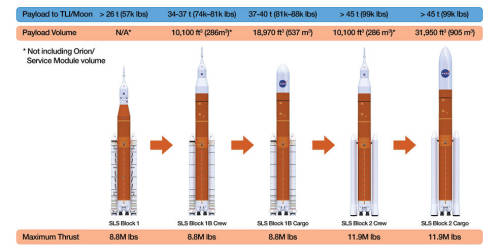
The first SLS vehicle, called Block 1, will weigh 5.75 million pounds and produce 8.8 million pounds of thrust at time of launch. That’s 15 percent more than the Saturn V produced during liftoff! It will also send more than 26 tons beyond the Moon. Powered by a pair of five-segment boosters and four RS-25 engines, the rocket will reach the period of greatest atmospheric force within 90 seconds!

Following Block 1, the SLS will evolve five more times to reach its final stage, Block 2 Cargo. At this stage, the rocket will provide 11.9 million pounds of thrust and will be the workhorse vehicle for sending cargo to the Moon, Mars and other deep space destinations. SLS Block 2 will be designed to lift more than 45 tons to deep space. With its unprecedented power and capabilities, SLS is the only rocket that can send our Orion spacecraft, astronauts and large cargo to the Moon on a single mission.
Build: How the Rockets Stack Up
Saturn V

The Saturn V was designed as a multi-stage system rocket, with three core stages. When one system ran out of fuel, it separated from the spacecraft and the next stage took over. The first stage, which was the most powerful, lifted the rocket off of Earth’s surface to an altitude of 68 kilometers (42 miles). This took only 2 minutes and 47 seconds! The first stage separated, allowing the second stage to fire and carry the rest of the stack almost into orbit. The third stage placed the Apollo spacecraft and service module into Earth orbit and pushed it toward the Moon. After the first two stages separated, they fell into the ocean for recovery. The third stage either stayed in space or crashed into the Moon.
Space Launch System (SLS)
Much like the Saturn V, our Space Launch System is also a multi-stage rocket. Its three stages (the solid rocket boosters, core stage and upper stage) will each take turns thrusting the spacecraft on its trajectory and separating after each individual stage has exhausted its fuel. In later, more powerful versions of the SLS, the third stage will carry both the Orion crew module and a deep space habitat module.
A New Era of Space Exploration
Just as the Saturn V and Apollo era signified a new age of exploration and technological advancements, the Space Launch System and Artemis missions will bring the United States into a new age of space travel and scientific discovery.
Join us in celebrating the 50th anniversary of the Apollo 11 Moon landing and hear about our future plans to go forward to the Moon and on to Mars by tuning in to a special two-hour live NASA Television broadcast at 1 p.m. ET on Friday, July 19. Watch the program at www.nasa.gov/live.
Make sure to follow us on Tumblr for your regular dose of space: http://nasa.tumblr.com.

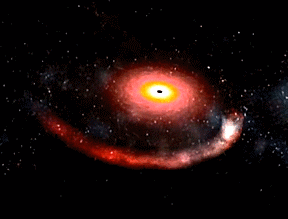
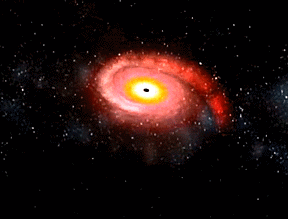
Unusual Signal Suggests Neutron Star Destroyed by Black Hole
What created this unusual explosion? Three weeks ago, gravitational wave detectors in the USA and Europe – the LIGO and Virgo detectors – detected a burst of gravitational radiation that had the oscillating pattern expected when a black hole destroys a neutron star. One object in event S190814sv was best fit with a mass greater than five times the mass of the Sun – making it a good candidate for a black hole, while the other object appeared to have a mass less than three times the mass of the Sun – making it a good candidate for a neutron star. No similar event had been detected with gravitational waves before. Unfortunately, no light was seen from this explosion, light that might have been triggered by the disrupting neutron star. It is theoretically possible that the lower mass object was also a black hole, even though no clear example of a black hole with such a low mass is known. The featured video was created to illustrate a previously suspected black hole - neutron star collision detected in light in 2005, specifically gamma-rays from the burst GRB 050724. The animated video starts with a foreground neutron star orbiting a black hole surrounded by an accretion disk. The black hole’s gravity then shreds the neutron star, creating a jet as debris falls into the black hole. S190814sv will continue to be researched, with clues about the nature of the objects involved possibly coming from future detections of similar systems. Illustration Video Credit: NASA, Dana Berry (Skyworks Digital)
-
 caspersmom liked this · 8 months ago
caspersmom liked this · 8 months ago -
 aestheticvoyagersworld liked this · 8 months ago
aestheticvoyagersworld liked this · 8 months ago -
 theelectricyeet reblogged this · 8 months ago
theelectricyeet reblogged this · 8 months ago -
 theelectricyeet liked this · 8 months ago
theelectricyeet liked this · 8 months ago -
 tachvintlogic reblogged this · 8 months ago
tachvintlogic reblogged this · 8 months ago -
 xploseof reblogged this · 9 months ago
xploseof reblogged this · 9 months ago -
 infinitemonkeytheory reblogged this · 10 months ago
infinitemonkeytheory reblogged this · 10 months ago -
 fernando1maya34indian liked this · 10 months ago
fernando1maya34indian liked this · 10 months ago -
 leaveyourego liked this · 10 months ago
leaveyourego liked this · 10 months ago -
 beardedmrbean reblogged this · 10 months ago
beardedmrbean reblogged this · 10 months ago -
 korbyguck liked this · 10 months ago
korbyguck liked this · 10 months ago -
 gruesomebeastbear liked this · 10 months ago
gruesomebeastbear liked this · 10 months ago -
 kevindrakewriter reblogged this · 10 months ago
kevindrakewriter reblogged this · 10 months ago -
 galacticshark liked this · 10 months ago
galacticshark liked this · 10 months ago -
 caoticos liked this · 10 months ago
caoticos liked this · 10 months ago -
 hyren111 liked this · 10 months ago
hyren111 liked this · 10 months ago -
 morebearsinheavenandearth reblogged this · 10 months ago
morebearsinheavenandearth reblogged this · 10 months ago -
 lunar-solaris liked this · 10 months ago
lunar-solaris liked this · 10 months ago -
 the-littlest-of-all-bitches reblogged this · 10 months ago
the-littlest-of-all-bitches reblogged this · 10 months ago -
 darkbluevelvet liked this · 10 months ago
darkbluevelvet liked this · 10 months ago -
 fictional-llamas liked this · 10 months ago
fictional-llamas liked this · 10 months ago -
 europeposts liked this · 10 months ago
europeposts liked this · 10 months ago -
 flummoxed-lummox reblogged this · 10 months ago
flummoxed-lummox reblogged this · 10 months ago -
 flummoxed-lummox liked this · 10 months ago
flummoxed-lummox liked this · 10 months ago -
 vulpecula11blr liked this · 10 months ago
vulpecula11blr liked this · 10 months ago -
 cyberfraud liked this · 10 months ago
cyberfraud liked this · 10 months ago -
 dream-world-universe liked this · 10 months ago
dream-world-universe liked this · 10 months ago -
 theblackestdayh liked this · 10 months ago
theblackestdayh liked this · 10 months ago -
 erbath liked this · 10 months ago
erbath liked this · 10 months ago -
 bri125 liked this · 10 months ago
bri125 liked this · 10 months ago -
 gipsysoulwildheart liked this · 10 months ago
gipsysoulwildheart liked this · 10 months ago -
 thesolitarycat liked this · 10 months ago
thesolitarycat liked this · 10 months ago -
 gaygay--astronaut reblogged this · 10 months ago
gaygay--astronaut reblogged this · 10 months ago -
 to-be-anything--at-all reblogged this · 10 months ago
to-be-anything--at-all reblogged this · 10 months ago -
 xploseof liked this · 10 months ago
xploseof liked this · 10 months ago -
 volumniafox reblogged this · 10 months ago
volumniafox reblogged this · 10 months ago -
 emjayded liked this · 10 months ago
emjayded liked this · 10 months ago -
 fittgenstein liked this · 10 months ago
fittgenstein liked this · 10 months ago -
 wayno08 liked this · 10 months ago
wayno08 liked this · 10 months ago -
 katastrophically reblogged this · 10 months ago
katastrophically reblogged this · 10 months ago -
 the-summer-sun-au liked this · 10 months ago
the-summer-sun-au liked this · 10 months ago -
 nixonj81 liked this · 10 months ago
nixonj81 liked this · 10 months ago -
 oswinoswalddd liked this · 10 months ago
oswinoswalddd liked this · 10 months ago -
 analog-existence liked this · 10 months ago
analog-existence liked this · 10 months ago